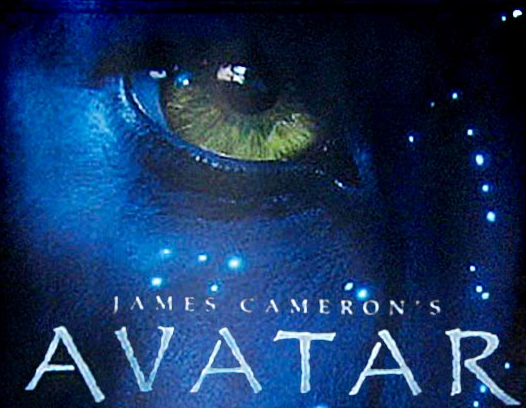Vancouver, Canada, June 3, 2010
M. Garcia, Consul-General of France
Distinguished guests
Ladies and Gentlemen
Good evening and, thank-you so much for coming!!
I stand here tonight feeling both proud and humbled. Proud because so much about culture and creativity is affirmed by this honour, and humbled because I have been chosen to receive this prestigious award from the French government.
Mes premiers mots seront pour exprimer mes sincère remerciements
au gouvernement français, à l'ancienne ministre de la culture et de la communication Madame Christine Albanel, au ministre de la culture et de la communication Monsieur Frédéric Mitterand, à l'Ambassadeur de la France à Ottawa, Monsieur François Delattre, au Consul de la France à Vancouver, Monsieur Alexandre Garcia et à son Attaché Culturel, Monsieur Hadrian Laroche.
Merci pour tout ce que vous avez fait pour rendre possible cette grande distinction.
C’est un honneur d’avoir été reconnu et accepté à l ordre — un ordre qui est unique en caractère et objectif parmi les démocraties occidentales.
Let me express my profound thanks to the French government, the former Minister of Culture and Communication, La Ministre, Christine Albanel, the Minister, M. Frederic Mitterand, the French Ambassador in Ottawa, M. François Delattre, and M Alexandre Garcia the Consul in Vancouver and his Cultural Attaché, M Hadrien LAROCHE. Thank-you for making this award possible and thank-you for the recognition and for supporting awards of this kind, which are unique in character and purpose in Western democracies. My deepest thanks also to my wife Martha and my two daughters, Maija and Katie for their support and love.
One of the central purposes of French government cultural policy in the international arena is the promotion of cultural diversity among all nations. This policy is also at the heart of UNESCO’s cultural platform. 93 nations signed an agreement to promote cultural diversity, including Canada. France led this effort, and among the policy’s key statements are the following:
**Affirming** that cultural diversity is a defining characteristic of humanity;
**Conscious** that cultural diversity forms a common heritage of humanity and should be cherished and preserved for the benefit of all;
**Being aware** that cultural diversity creates a rich and varied world, which increases the range of choices and nurtures human capacities and values, and therefore is a mainspring for sustainable development for communities, peoples and nations;
and finally,
**Recalling** that cultural diversity, flourishing within a framework of democracy, tolerance, social justice and mutual respect between peoples and cultures, is indispensable for peace and security at the local, national and international levels.
These statements and the values they put forward are in many respects, at the heart of my career and articulate far better than I ever could what has motivated me to spend a lifetime creating, promoting and defending culture in all its manifestations and forms.
I was born in London, England in a difficult post-war period of deprivation and familial challenge. My family and I immigrated to Canada in 1952 during a time of economic difficulty for all countries. The struggle of immigrants to find their place has only accelerated since then, not only because of the increasing movement of peoples across many societies, but also because so many cultures have faced immense and sometime insurmountable struggles to survive. Disaporic experiences were fundamental features of the 20th century and will continue to determine the direction of the 21st century.
My career is built upon and is a reflection of what I learned during that formative and early period of my life as we struggled to adapt to living in Montreal.
Over the last forty years, I have worked at a number of positions including a wonderful period at McGill University and five years in Australia at LaTrobe University. During my tenure as the President of Emily Carr University I have learned more than I could ever have imagined when I took the position fourteen years ago.
Seamus Heany, the great Irish poet, credits poetry for teaching him to “walk on air against your better judgment.”
Albert Camus, whom I read in my teens and who had a formative impact on my life, said, “The artist forges himself midway between the beauty he cannot do without and the community he cannot tear himself away from.” “Et celui qui, souvent, a choisi son destin d'artiste parce qu'il se sentait différent apprend bien vite qu'il ne nourrira son art, et sa différence, qu'en avouant sa ressemblance avec tous.”
When you walk on air, life is a continuous adventure. And, when you immerse yourself in beauty, even the saddest moments are learning experiences. Learning is at the heart of what I do everyday. It is only possible to learn if one remains open, open to change, open to insights, open to difference. Even in this historical period characterized by many difficult challenges, I continue to believe that it is possible to walk on air.
I am privileged everyday at Emily Carr to be among wonderful people and to experience their passionate excitement about creativity, invention and innovation — their extraordinary commitment to the materials of art, to the crafts of making and to the challenges of living and learning about the creative life, their passion for aesthetics, for colour and for form, their intense desire to produce meaning and communicate it, all of this has not only taught me a great deal, but also given me a profound insight into the potential and importance of the creative process.
So, this award means the world to me because it also acknowledges the values of that creative life and the importance of sustaining creativity in every aspect of what we do everyday of our lives.
The other great intellectual mentor in my life is Claude Lévi-Strauss. His work brings together all of my interests in anthropology, sign systems, linguistics and images. It is therefore not without some sense of the ironies of history that we find ourselves today amidst a renaissance in First Nations culture and cultural production.
Because, it was Lévi-Strauss who brought Pacific Northwest native culture into French consciousness and did more than many to signal to Westerners the importance of culture to this extraordinary area of the world. And, it is not without irony that in one of his last books, brilliantly titled, Look, Listen, Read (Regarder, Ecouter, Lire) that Levi-Strauss celebrated the craft of basket weaving so integral to First Nations culture. He talks of craft in relation to myth and of the integrated nature of making, thinking and living. For me, making, thinking and creative engagement are at the core of what I do and how I live.
I will leave it to my other great intellectual hero, Michel Serres to complete these remarks. In speaking about the social and cultural context that we now share, Serres mentions the endless noise of modern life, the sharp points of despair at the edge of chaos, and he contrasts this with art as the means through which we build society, create vision and make peace with each other and with the world we live in. And then, in talking about Lévi-Strauss, he says, Levi-Strauss helps us see what we can’t see, and through his stories he helps us understand the strange and beautiful social forms that surround us. Cheers to that and cheers to you all!! Et Merci encore à vous tous.
 Saturday, July 3, 2010 at 5:32PM
Saturday, July 3, 2010 at 5:32PM  Emily Carr University of Art + Design
Emily Carr University of Art + Design Art,
Art,  Creativity in
Creativity in  Creativity
Creativity 

![Reblog this post [with Zemanta]](http://img.zemanta.com/reblog_e.png?x-id=e2ef7b67-19e0-44f4-aa98-1c9cd0fb7f44)


